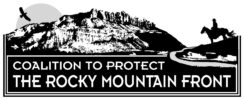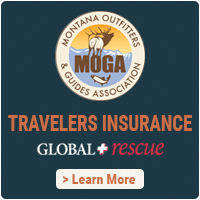7 Lazy P Summer Pack Trip & Hiking Gear List
Here are our suggestions for clothing and gear, so that you are comfortable and prepared to enjoy your trip. If you are a seasoned outdoor person, you most likely already know what works best for you. If this is your first trip, or you are unsure of what to bring, this may be of help. Any time you have questions about gear or what to bring, don’t hesitate to contact us. Also, if you have any doubts before the trip, we can help you go through your gear at the ranch. Below is our extensive hiking gear list to make your trip the best ever!
You want functional and practical articles of clothing, just what you need and not one thing more. A good rule of thumb is a change of underclothing for every two days, an extra pair of trousers, and two extra shirts. Remember when you are packing that you will be wearing the first two days of clothes. Also, there will be opportunities to launder a few articles like socks and t-shirts if needed.
Underclothing
- T-Shirt, Socks, Underwear
◦ 1 set for every two days. You may want a special pair of socks for hiking or a pair that you will wear in wading sandals for fishing.
- Long Underwear
◦ A light set of tops and bottoms for cold, rainy days and nights. The synthetics are better than the all-cotton and that
goes for t-shirts as well.
- Shirts & Pants
In addition to what you will be wearing when we leave the ranch, you will want:
- 2 shirts – long sleeved are best, one lighter, one heavier
- Extra pair of jeans or other durable trousers that are suitable for riding
You may also like to bring a pair of light hiking pants/ shorts and a swimsuit
Footwear
- Western boots are fine if you prefer them to ride in, but are not mandatory.
- Don’t bring lighter, fashion boots or others of questionable quality as they will likely fail, especially if they get wet
(which they will).
- A food pair of gore-tex, medium weight hiking shoes will keep your feet dry in wet weather, are fine for riding, and will
save bringing an extra pair for hiking.
- Tennis shoes or equivalent for camp wear.
Crocs or water sandals for bathing and wading.
Outer Layers
Heed your own temperature tolerance level when assembling your outerwear for the trip. It may be in the 80’s one day and drop to the 40’s at night, or lower if there is a storm. There is a plethora of outdoor clothing available and seeing much of it being worn around town you probably have most, if not all of what you need.
- Fleece sweater or jacket.
- Vest and/or light quilted jacket with shell or a medium weight jacket.
- Rain Suit – The best you have or can afford. Pants and jacket are best. If you have, and like to carry a saddle slicker, that
is fine too. We are not too high on the “oil-skin” type. They are heavy and usually not that waterproof. No ponchos
please.
- Hats – Ball caps are good, a brimmed hat if you choose. A beanie for cool mornings.
- Gloves – a light pair and a synthetic or wool pair that will keep you warm when wet.
Sleeping Gear
You want a sleeping bag that will keep you warm down to 30 degrees or so. Since they are rated a little high, I would choose one that is rated for 15, or even 0 if you have trouble sleeping warm. Again, use your personal temperature tolerance level.
- Mummy bag – the back-packing style mummy bags are lighter, save on space, and are warmer.
- Self-inflating pad – no shortage of options here. Reasonable size and thickness please.
- Camp pillow – small and compressible. Your jacket in a stuff sack works well too.
Toiletries & Personal Items
- Toilet kit with usual items and anything else you may anticipate needing. It’s a long ride to a drug store!
- Prescriptions, pain relievers
- Baby wipes
- Sun screen, insect repellent, chap stick
- Bath towel & wash cloth
- Soap & shampoo, biodegradable preferred
MISCELLANEOUS
- Headlight and extra batteries
- Camera, card, batteries
- 2 medium size water bottles (the giant Nalgene type will not fit in your horn bags)
- Day pack for hikes – one that is light and easily compressible into your duffel is the best. Day packs will not be taken on
the horses when riding.
- Note pad or journal, book for reading, deck of cards
- Sunglasses
- Glasses – extra pair of glasses if you use them
- Compact binoculars
- Beer, boxed wine, etc. This will be packed with the groceries. (No glass bottles.)
EpiPens – if you need to have an EpiPen close by, it is best to have 2 with you and 2 more in your gear. Be sure to let us
know if you have the need to use an EpiPen.
Assembling Your Pile Of Stuff
You will need a duffel bag, long and narrow is best for packing. A bag that is about 32” x 14” should hold all your gear except maybe your pad and sleeping bag. You may bring those in another bag or loose and we will combine them in the loads. Your clothing, sleeping bag, and pad should all weigh 35# or less. Be sure and line your duffel with a garbage bag or put your clothes in ziplock bags to keep contents dry in case of a downpour on the trail. Same for sleeping bags.
Your rain gear and light jacket will go with you on your saddle at all times. We will provide horn bags for your lunch, water bottles, camera, gloves, etc. There will also be a mule (the consumer protection mule) that travels with you and your wrangler that will have a first aid kit, satellite phone, and room for any miscellaneous articles.
Bear Aware
We frequently get asked about bears and any risk they might present. Native wildlife, rugged country, weather, fire, horses & mules all present risk. It is the element of some risk that gives Wilderness its allure, but know that bear encounters in the Bob Marshall Wilderness are rare. Being mindful and aware is the best frame of mind for all activities. We have bear spray available on the trips for our staff and guests to carry when on hikes and fishing. Guests are welcome to bring their own. Be aware that bear spray is not allowed on any flights.
It is important to not have food in or near your sleeping tent. Any food or snacks should be stored in with the camp groceries which are in bear-proof boxes.
For more information about bear encounters, visit www.bebearaware.org.
Firearms
Some guests inquire about bringing a handgun. Please contact us if you are considering bringing a handgun. If your intent is for protection against bears, know that bear spray is much more effective.
Water Filters
We often get questions about drinking water in the backcountry. We carry large capacity, high-end ceramic filters for camp use. If you have concerns, feel free to bring your own tablets, steripen, straw, filter, etc.
Communication
Being in the Wilderness is the perfect time to unplug and lose track of time!! There is not cell service where we are going, however, we do have a satellite phone on the trip for emergencies. If you choose to bring your own satellite phone (which is not necessary), we ask that you keep it discreet.
Alcohol Policy
Moderate consumption of alcoholic beverages is allowed. 7 Lazy P Outfitting, LLC offers no alcohol for sale, obtaining libations is the responsibility of the client. Canned beer and boxed wine only, liquor should be in plastic to save weight. Staff will make final decisions on amounts taken based on available space and weight with other cargo. Inappropriate behavior, including vulgar language, will not be tolerated. 7 Lazy P Outfitting, LLC staff will intervene, and may remove, any individual who becomes disruptive or a threat to safety.
Fishing
The streams we get into are not large and are easily wadeable. On the high country trips there may only be a couple of days for fishing. So unless your trip is fishing specific, we ask that you keep the gear minimal and not bring waders, using instead water shoes to wade with. Thanks!
- Montana fishing license (can get one online at www.fwp.mt.gov or locally)
- Fishing rod – a 4 wt rod will be fine in most situations. Pack rods if you have one.
- A few incidentals – tippet, float-ant, and extra leader or two
- A short list of dry flies will most likely do, however some like to bring a few Nymphs and Streamers. A few to consider:
- Dry flies:
- Royal Wulfe
- Royal Coachmen
- Crazy Goof’s
- Elk Hair Caddis
- Joe’s Hopper
- Dave’s Hoppers
- Pale Evening Dunn
- Parachute Adams
- Stimulators ◦
- Nymphs:
- Streamers:
- Muddler Minnow
- Woolly Bugger
If you are an avid fisherman, you will have your own list. This is just a few of the common flies for our area. Barbless hooks are recommended.
- Spinning outfits: if you bring a spinning rod, make sure lures are single hook.
What To Carry With You On Your Horse
Guests will be issued horn bags. We find these superior to traditional saddle bags, to carry lunch, 2 water bottles (the giant nalgene-type will not fit so bring a more moderate sized water bottles that you can easily drink from while riding), camera, gloves, ibuprofen, etc. Horn bags place that extra weight over the horse’s center of gravity where it should be. Rain gear and extra jackets will be tied behind your saddle. There will be one mule that accompanies the guest group, who the crew will refer to as the Consumer Protection Mule. This mule will have a first aid kit and satellite phone. There is also room for extra gear that folks might have that does not safely fit on their saddle.
Can I Bring My Personal Saddle Or Saddle Bags?
We get more than a few folks who would like to bring their personal saddles. We understand the desire to do this, however there are lots of different saddles out there and many are not configured the best for what we are doing. If you are driving and you would like to bring your saddle along that is fine. Just know that we are very particular and 7 Lazy P Outfitting, LLC reserves the right to determine if your saddle will be acceptable.
Behind the cantle saddle bags are another item that guests sometimes show up with. We feel the horn bags are so superior to saddle bags that we now use them exclusively.
Horsemanship
An important part of our operation is our riding and pack stock. Without them, you and I wouldn’t get very far. They’re not just essential transportation, they are creatures we care deeply about and their welfare is one of our highest priorities. Making sure that you have a safe experience with your horse is important to us. We give a short seminar prior to departure from the trailhead, but here are some things to ponder in the meantime. Many of you have at least some riding experience, some may even have their own mounts, and some may have never been on a horse before. If this is your first time riding, or it has been years since you were on a horse, getting some riding in before the trip is great if you can do it. It should sharpen your skills and raise your confidence level.
- Your horse is a thinking, feeling creature. Be kind and don’t ask him to do the impossible. He is your partner, not your slave. Treat them with respect and they will take care of you.
- When riding the trail, one of the crew will usually be in the lead. We will always stop and start together. Don’t hesitate to call out anytime you need to stop for any reason. The entire group will wait, otherwise your horse will probably not stand still for you to remount as he will want to catch up to the other horses. This may be the number one opportunity for an accident. Make sure the person in front of you waits for you to get back on. Before remounting it is also a good time to check your cinch, especially if it has been awhile.
- Try not to become dead weight on your horse’s back. This is really hard on them. It may not seem like it, but you can make a dramatic difference with your posture. Stay up on your stirrups and help the horse out when going up or down hills and crossing bogs and logs. Riding a horse should be an interactive endeavor. Put some life in your seat and try to move with the horse and not against him. They will appreciate it and so will we.
- We will get off and walk periodically. This is really important to avoid sore knees. Your butt may be tired at the end of the day, but that will recover quickly. Knees that are tweaked and sore from riding too long can give you trouble the whole trip. So, when you feel your knees getting stiff, get off and walk for 15-20 minutes. We will let everyone know when we are on a good stretch of trail to walk.
- The crew will do the saddling, but it doesn’t hurt for you to keep an eye on your equipment. Make sure your cinch is snug before mounting and watch the position of your saddle and pad, especially going downhill. If you think there is a problem with any of your equipment be sure and let your guide know. It will probably only take a second to fix and could prevent a wreck.
- The best way to avoid any problems is to use good sense when riding. If it doesn’t look or feel right, don’t get yourself into a jam by ignoring your gut feeling.







